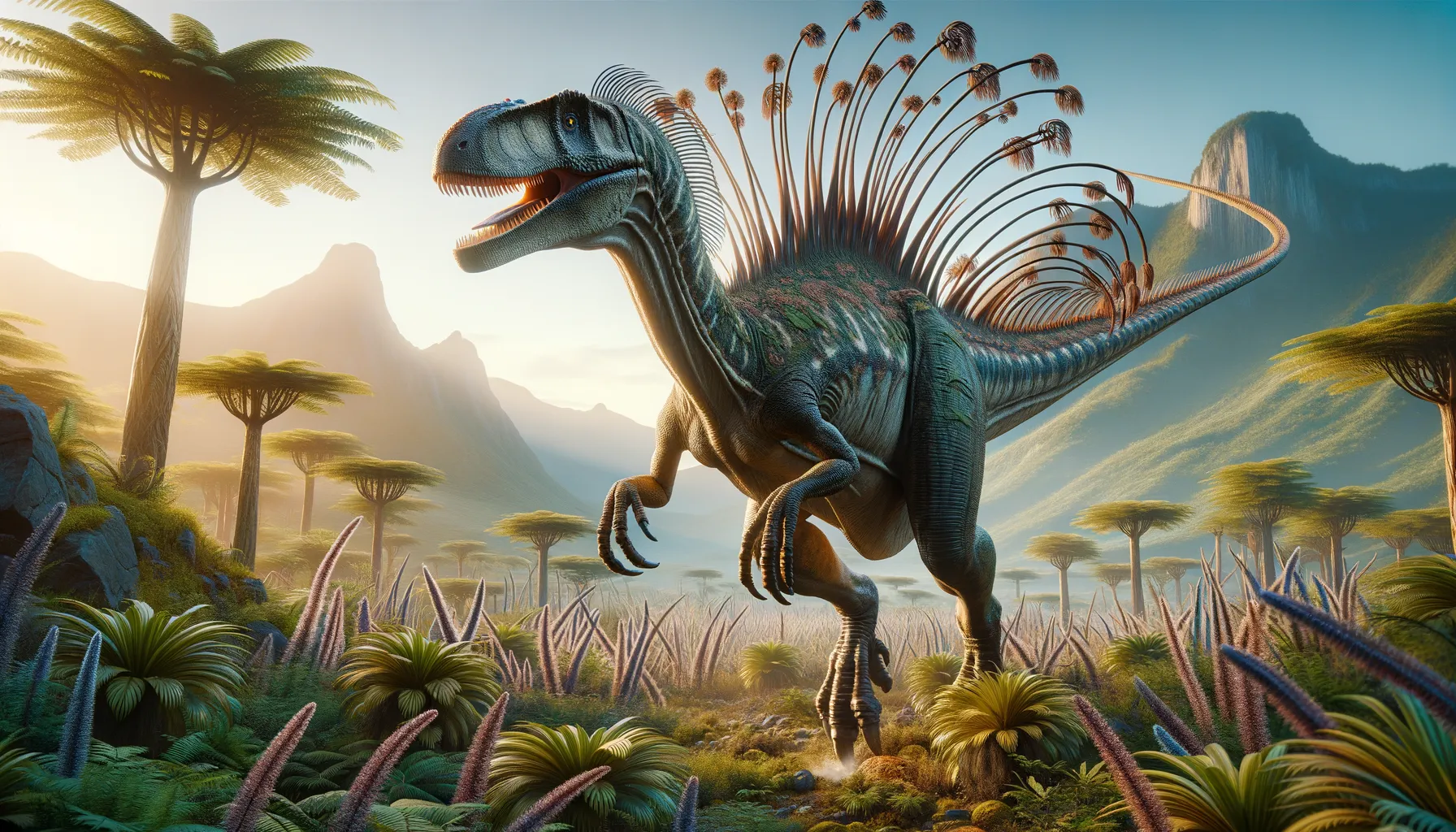
Craspedodon
A European herbivore of mysterious origins.
Period
Cretaceous
Length
Approximately 9 meters long.
Height
Around 3 meters tall.
Weight
Estimated to be about 2 tons.
Craspedodon was a plant-eating dinosaur from the Late Cretaceous period. It belonged to the ornithopod group, known for its ability to walk both on two and four legs. Its fossils, discovered in Europe, provide valuable insights into the dinosaur biodiversity of that region during its time. The exact classification and characteristics remain unclear due to limited fossil remains.
Diet
Craspedodon was herbivorous, primarily feeding on plant material. It likely browsed on vegetation available in its environment, using its beak-like mouthparts to clip leaves and stems.
Hunting
As a herbivore, Craspedodon did not engage in hunting. It foraged for food in groups, likely helped by excellent vision to spot potential food sources and avoid predators.
Environmental challenges
Craspedodon faced various environmental challenges typical of the Cretaceous period, including climate changes and shifting sea levels. These changes would have affected the vegetation it depended on, requiring adaptability in foraging strategies. Predators also posed a significant threat, necessitating defense mechanisms like group living or using herd behavior for protection.
Speed
Likely slow, similar to other ornithopods.
Lifespan
Estimated to be several decades.
First discovery
Found in Belgium in the 19th century.
Fun Facts
- Craspedodon means 'fringed tooth', referring to its distinct teeth shape.
- Craspedodon lived during the late Cretaceous period, around 70 million years ago.
- Fossils of Craspedodon were first discovered in Belgium and were initially recognized in 1871.
- It is believed Craspedodon was a plant-eating dinosaur, part of the larger group of iguanodontians.
- Craspedodon's fossils are primarily known from isolated teeth, making it a somewhat mysterious dinosaur.
- Though not much of Craspedodon has been found, these few fossils have sparked significant scientific interest.
- Craspedodon's exact classification has been debated, illustrating the evolving nature of paleontological research.
Growth and Development
The growth and development of Craspedodon would have been typical for an ornithopod, with rapid growth during the juvenile stage. It likely reached maturity within a few years. This rapid growth would have required abundant plant material for sustenance.
Habitat
Craspedodon lived in a variety of terrestrial habitats, potentially including floodplains and forested regions. These areas provided ample vegetation for its diet. The Cretaceous landscapes in Europe offered warm climates, suitable for its large size and dietary needs.
Interaction with other species
Craspedodon would have shared its environment with both predators and other herbivores. Its interactions likely included competition with other plant eaters and avoidance behaviors concerning potential carnivorous threats. Cooperation within its species could have been crucial for survival.
Natural lifespan
Craspedodon likely lived for several decades under natural conditions.
Reproduction
Craspedodon would have reproduced by laying eggs, likely in nests protected by vegetation. The reproductive cycle likely aligned with seasonal variations, aiming for hatchlings to emerge during optimal conditions for growth and food availability.
Social behaviour
Social behavior in Craspedodon might have involved group living to enhance survival, particularly against predators. These social structures could also facilitate efficient foraging, with group dynamics allowing shared resources and communal care for young.
Fossil locations
Fossils of Craspedodon have primarily been discovered in Belgium, offering critical insight into dinosaur presence in Europe. These remains are fragmentary, posing challenges for definitive classification but are crucial in understanding the diversity of Late Cretaceous dinosaurs in the region.
